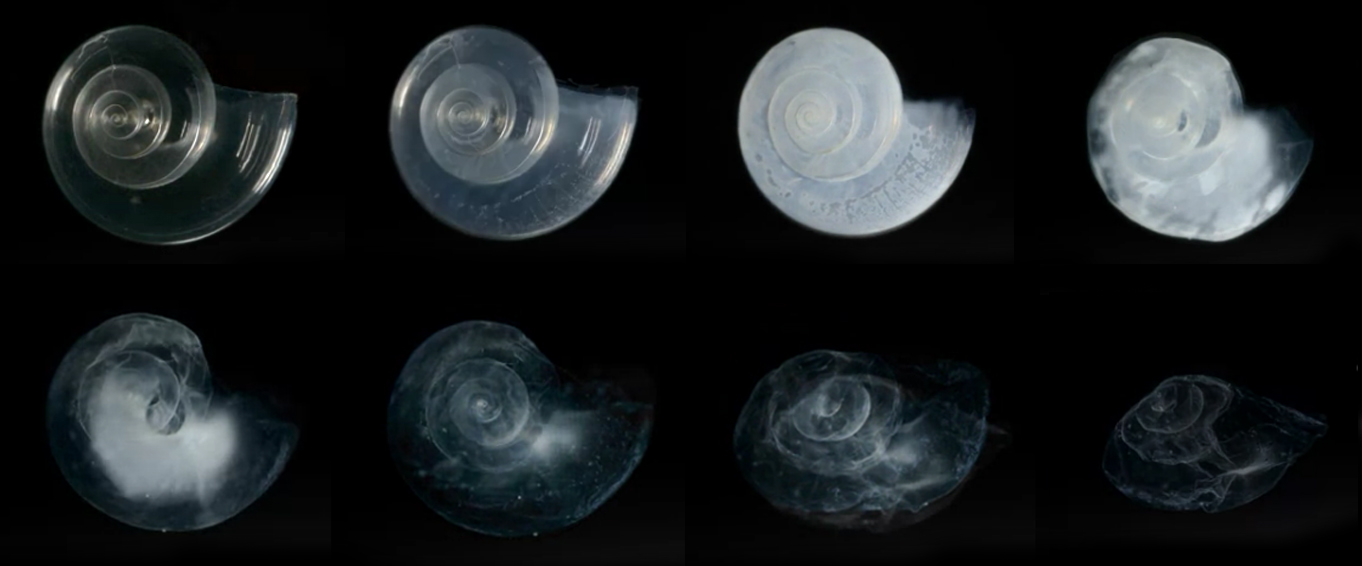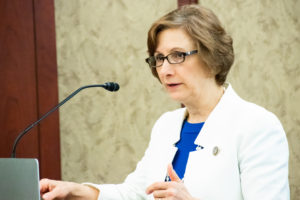
New Legislation Introduced to Fight Ocean Acidification
Congresswoman Suzanne Bonamici and Congressmen Don Young and Derek Posey introduced HR 6267 to amend the Federal Ocean Acidification Research And Monitoring Act (FOARAM) at the end of June. This bill expands upon the 2009 Act, which established the Interagency Working Group on Ocean Acidification and coordinates acidification research and management activities across the Federal government. The National Marine Sanctuary Foundation applauds their efforts to prioritize the need for sound science and strong collaboration on the issue of ocean acidification.

Congresswoman Suzanne Bonamici speaking at Hill Day 2018. Photo credit: Brendan Kownacki
The bill aims to strengthen investments in ocean and coastal acidification research and monitoring, increase understanding of the socioeconomic impacts of ocean acidification, and establish an Advisory Board to increase coordination among stakeholders. Bill language can be found here.
The creation of an Ocean Acidification Advisory Board is especially critical because it brings together representatives from the shellfish and crab industry, finfish industry, seafood processors, academia, nongovernmental organizations, state, local, and tribal governments, and regional coastal acidification networks to provide analysis of strategic research plans and biannual reports to Congress. This diverse expertise represented by the Advisory Board is critical for providing the local to global perspective required for combatting the impacts of acidification.
The reauthorization of FOARAM echos calls to action made during Capitol Hill Ocean Week 2018’s “Predicting, Detecting, and Preparing for Increasing Acidification” panel. Many of the panelists stated the need for increased funding for ocean acidification monitoring and research. “Monitoring enables us to predict patterns and reach a state of stability,” said panel moderator, Alexis Valauri-Orton, Program Manager for The Ocean Foundation’s Ocean Acidification Program.
Dr. Jan Newton, Executive Director of the Northwest Association of Networked Ocean Observing Systems, compared monitoring buoys to “putting headlights on a car,” enabling scientists to see changing water conditions in real time. “Let’s really understand our systems so that we can adapt,” said Dr. Newton. She highlighted that existing long-term monitoring data has helped scientists to identify trends and develop tools to assist local stakeholders. This is especially critical for fishermen and aquaculturists and other industries dependent on predictable environmental conditions for their livelihood.
Dr. Newton also highlighted the work being done at the Olympic Coast National Marine Sanctuary, which was established as a sentinel site specifically for ocean acidification due to the upwelling of cold, nutrient-rich water that occurs each year. Data from the site is used to monitor and predict the impacts of ocean acidification on marine communities, and is shared with local partners such as fishermen and oyster hatcheries. Work done at the Olympic Coast National Marine Sanctuary is especially critical for understanding the impact of ocean acidification across sectors. Many industries, from fishermen to restaurants and grocery stores, to the transportation systems that connect them, rely on healthy and productive ocean ecosystems.
